
When you’re developing an app, you want to make sure you catch any errors in the code as early in the production cycle as possible.
For that, you’ll need an effective and reliable bug-tracking tool.
There are many bug-tracking solutions to choose from, so it can be hard to know where to begin in order to find something suitable.
Some solutions are designed for web development, while others are geared more toward mobile, some are simple to implement, while others have a steep learning curve.
It’s easy to get lost in the sea of choices, and it’s even easier to settle on a tool that doesn’t serve your needs.
To avoid these pitfalls, we’ve compiled a list of nine tools that will help you and your development team in your quest to find the best bug-tracking solution.
We’ve also included a few extra features that make them stand out from the competition.
Let’s see what they are!
Table of Contents
Shake
Among the many fantastic bug-reporting and tracking tools out there, Shake is a standout because it offers the right mix of valuable features, ease of use, and affordability.
The problem Shake solves is twofold.
First, users and testers don’t always know how to report bugs in an app, or what information to include in the report when they do.
This leads to long support tickets and delayed responses from developers.

Get unreal data to fix real issues in your app & web.
Second, developers have to spend time tracking down the information they need to fix bugs. This can be a huge drain on resources and slow down software delivery.
This is where the Shake comes in.
Named after its most distinguishable feature—you have to shake your phone in order to submit a report—it allows users and testers to report bugs automatically, with practically no effort.
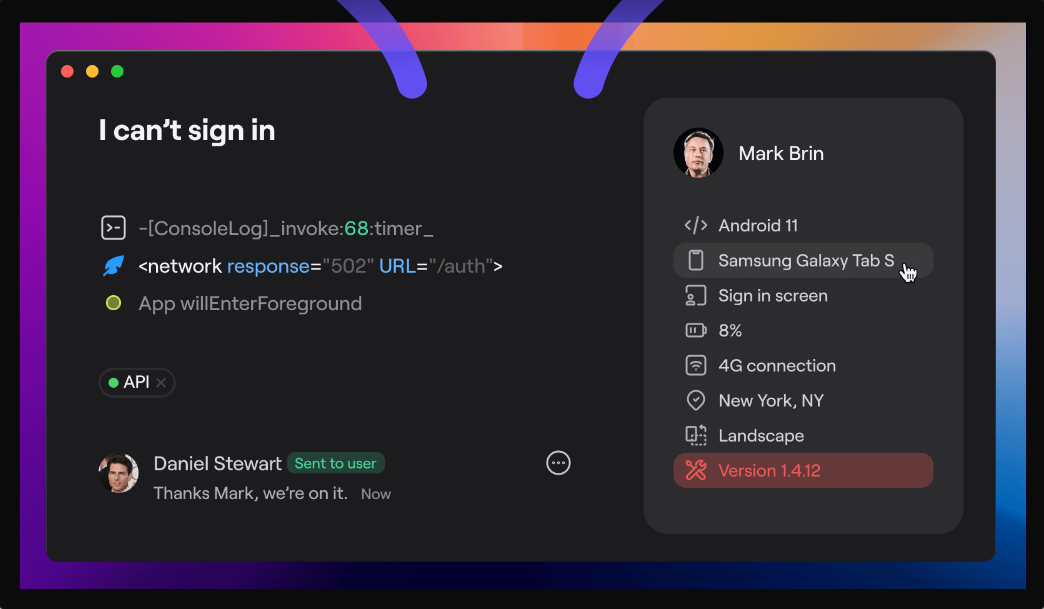
Moreover, Shake sends more than 70 different data metrics to each report, giving you and your development team plenty of information on what went wrong and how to fix it.
Shake also lets teams work smoothly together—every member will always have the latest information about what’s being fixed and what isn’t, so no one is left out of the loop, and no one has to play second fiddle to anyone else.
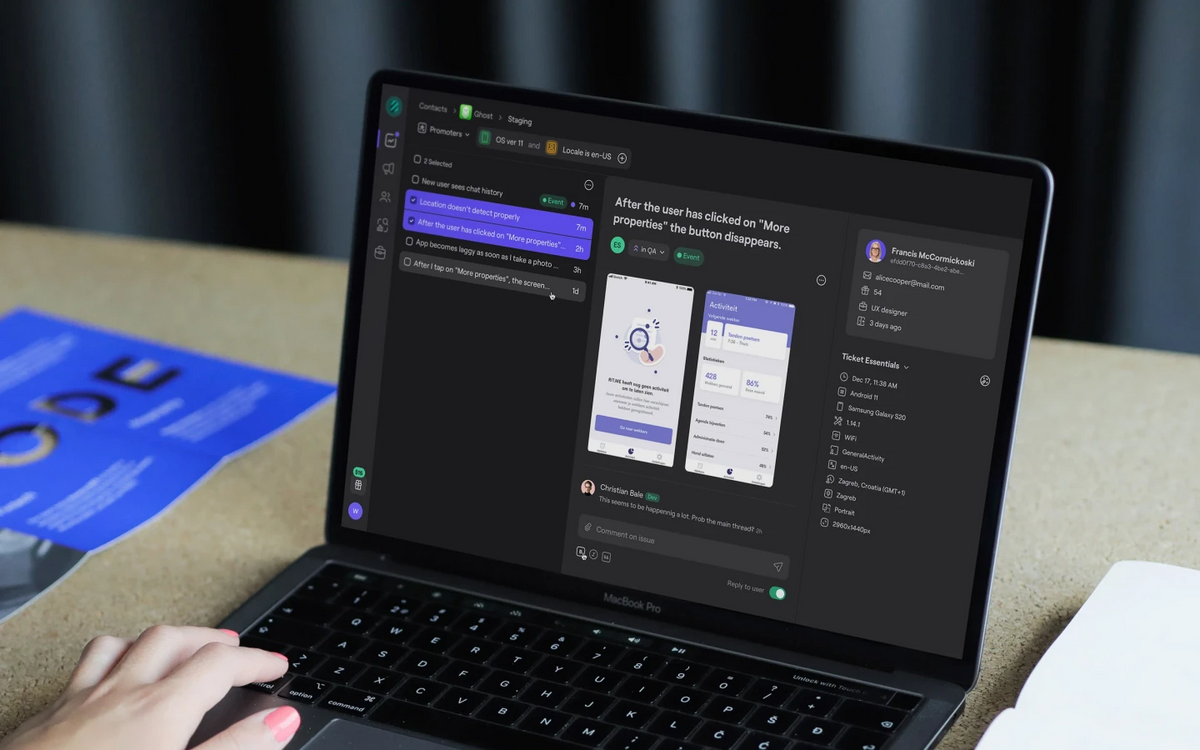
Its pricing plans include everything offered by the service—there are no hidden fees or add-ons that would require you to buy another plan to get all of Shake’s features.
Still, the best part is that this tool offers unlimited seats, meaning that you can invite all of your team members to join without having to pay for each individual subscription.
In other words, with Shake, you can make a big difference in how the users experience your app—and at a fraction of what it would cost to hire a dedicated team just for bug tracking.
However, it has to be noted that Shake is meant for tracking bugs in mobile apps only, so it’s not suitable for use with websites.
Bird Eats Bug
An effective bug-tracking solution is no less important when you’re developing a website or web application rather than a mobile one.
In that case, the best thing to do is to use a Chrome browser extension like Bird Eats Bug that will allow you to report defects directly from the browser.
In other words, when you detect an issue, you simply open the extension and start recording.
The extension will automatically take a video of the page from the user’s point of view and include things like console logs, steps to reproduce, network requests, and even environment details in the report.
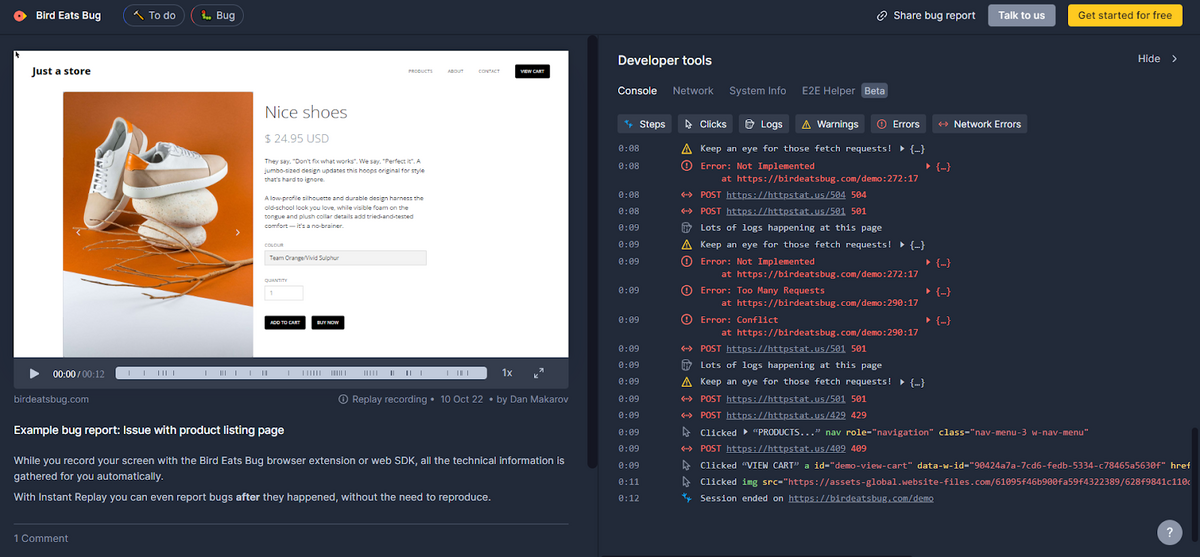
Once your report has been submitted, it will automatically attach all of your recording data along with any other relevant information that may have been gathered in an easy-to-use interface, shown in the picture above.
As an added bonus, you can also use it as a web SDK and install it on your internal and production apps to find bugs and other errors during beta and usability testing, before releasing them to the market.
Bird Eats Bug offers a free option with 15 uploads per month but otherwise requires a subscription.
BugHerd
When you’re working on a project with a lot of moving pieces, keeping track of all the feedback can be overwhelming.
You have your team and your clients chiming in with comments and questions, but a lot of the time, it’s hard to keep track of who commented what, and when.
BugHerd is an app that allows you to capture and manage bug reports, screenshots, and videos right in the browser so you can keep track of all your feedback in one place.
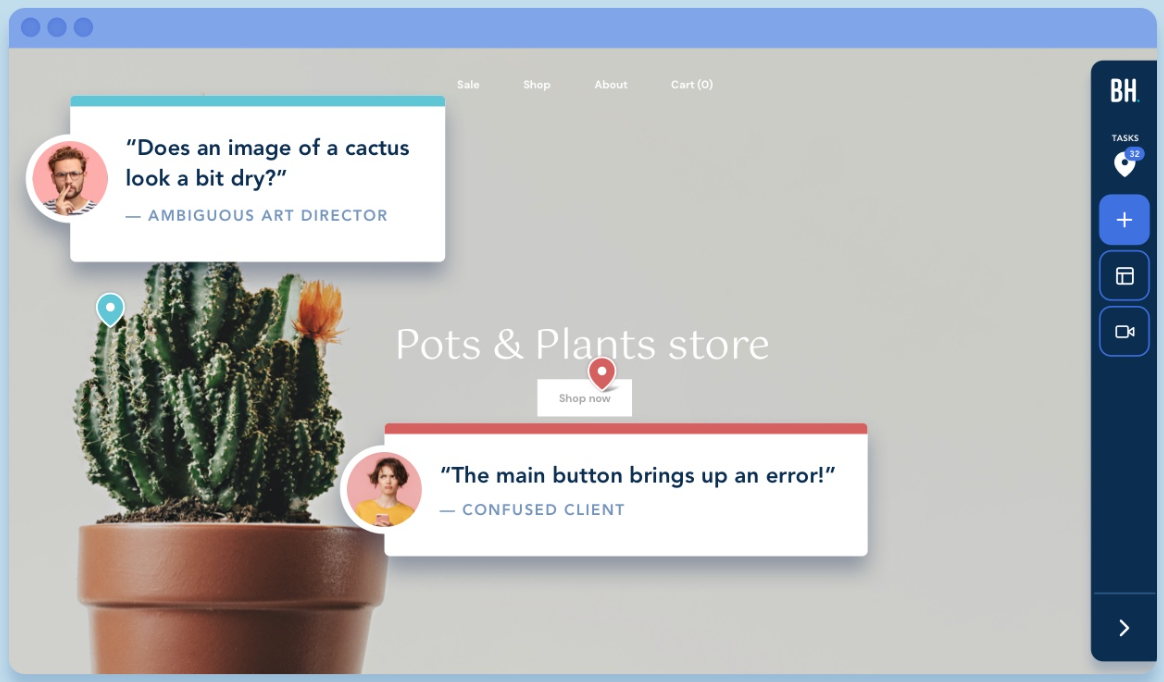
All this data is then sent to a customizable, Kanban-style board, where you can assign the feedback task to team members, set severity levels for different kinds of issues, and track progress.
BugHerd, as shown in the picture below, also captures additional technical information like the browser, operating system, and screen specifications, so developers have all of the necessary info at their fingertips when they begin debugging or fixing issues.
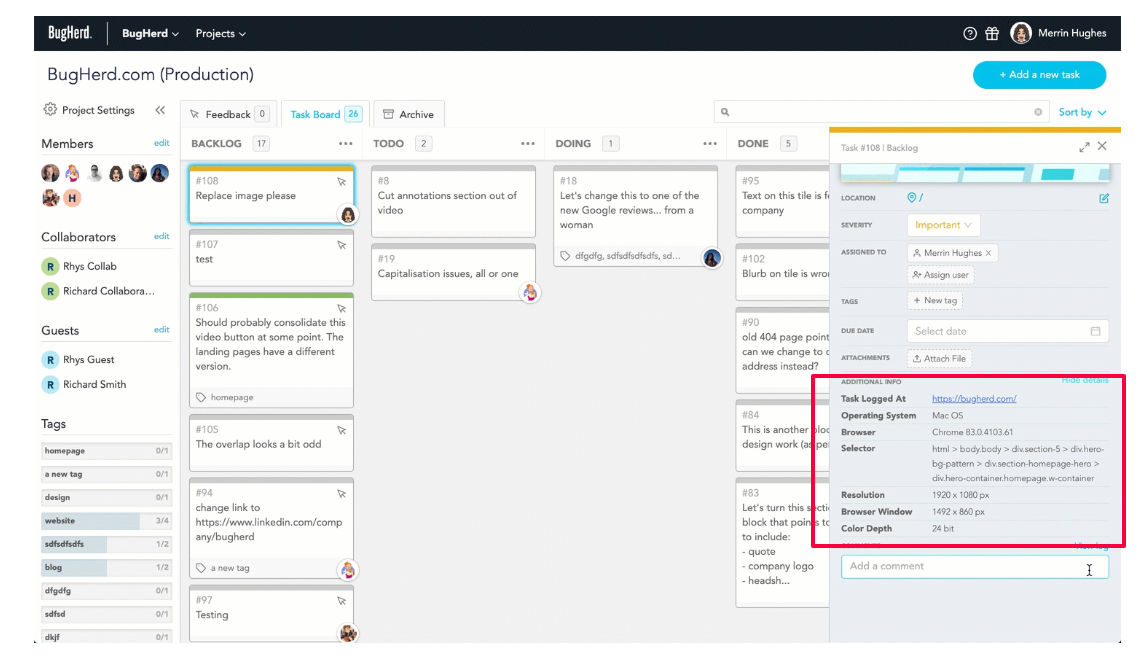
The downside, though, is that it’s only available for web apps and websites. If you’re looking for a bug tracker for mobile apps, then BugHerd won’t work for you.
Although it’s a bit more expensive than some of its competitors, it does have a trial version that lets you get a feel of how it works before you commit to a purchase.
Still, it gives you a detailed picture of what’s going on with your website and makes it easy for developers, testers, and clients to collaborate and fix bugs quickly and easily.
BugHost
BugHost is a web-based tool that makes bug tracking simple.
It has a built-in issue tracker that allows you to create, comment on and assign tasks—as well as an email notification system so you know when new bugs are reported or the existing ones are updated.
It’s designed to be easy for non-technical users, too, especially project managers who might not be familiar with the coding jargon but still want to be able to keep track of bugs and make sure they get fixed.
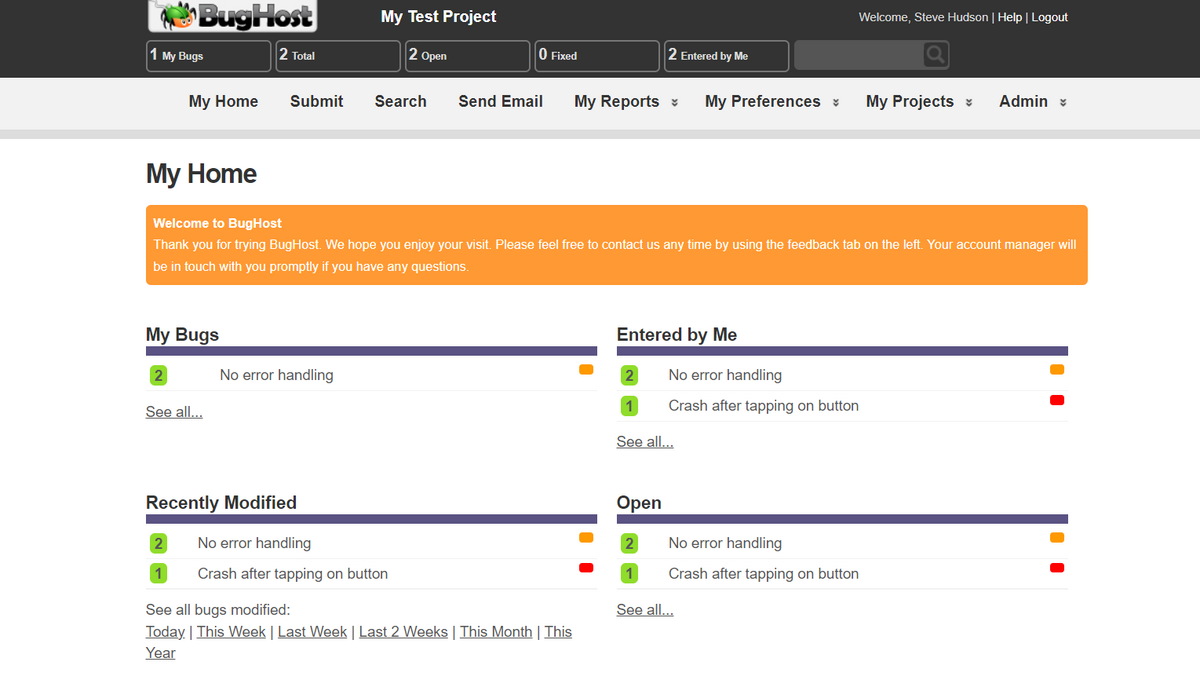
As an added bonus, BugHost provides unlimited storage and keeps a record of all bug reports in each project so you don’t have to worry about losing any data.
By having a history of all bug reports in one place, it’s also easier to find recurring issues and fix them once and for all.
The service is subscription-based, however, its free trial period offers full functionality for the whole 30 days.
As one of the earliest players in the bug-tracking space and one of the most successful companies in its field over two decades, BugHost remains an attractive option for anyone looking for an easy-to-use tool with great features.
Bugzilla
Bugzilla is another top-notch bug-tracking tool on our list.
This free, open-source software that helps developers track bugs and defects during the development process was developed by Mozilla, the company behind the Firefox browser.
Today it is used by many companies and organizations around the world.
It offers all of the basic bug-tracking capabilities (user accounts, issue creation and tracking, attachments, comments) but also has advanced features like time-tracking, milestones, issues dependencies, and more.
The software also comes with in-depth documentation that can help get you started.
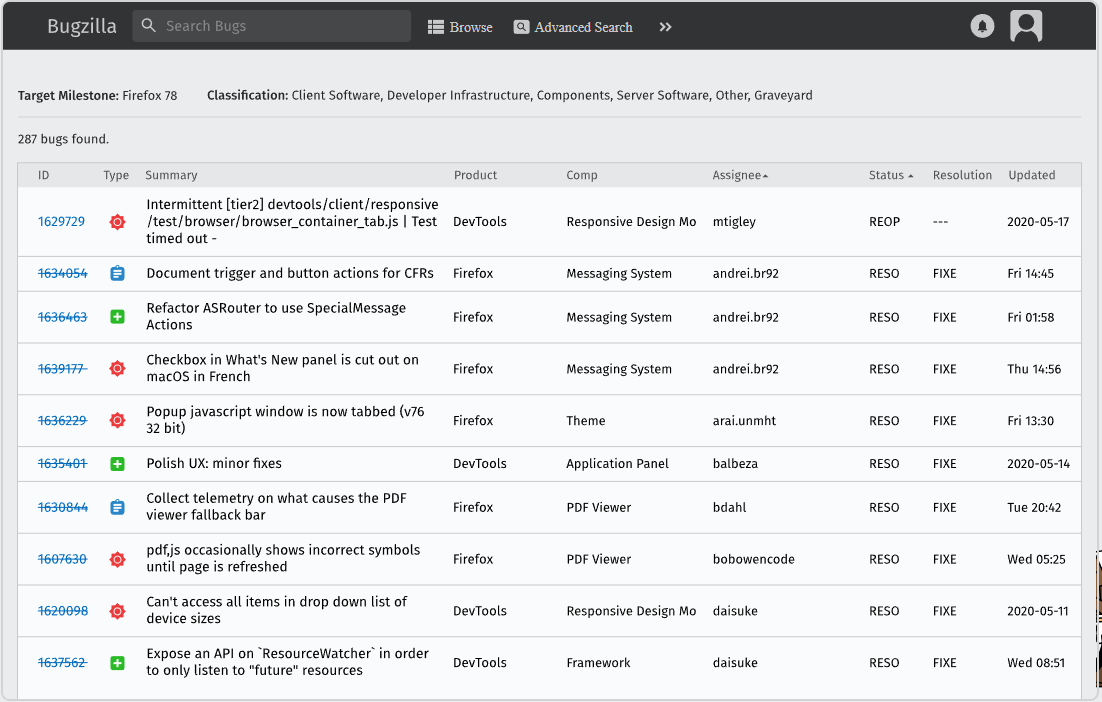
However, Bugzilla is more complex than some of the other tools we’ve discussed.
For one thing, since this software was originally designed to be used by developers, it’s not well-suited for non-technical users, meaning that if you fall into the latter category, you’re going to have some difficulty navigating it and finding your way through all the different functions.
And the mere fact that Bugzilla uses email as the main method of communication between users may be a bit off-putting.
But, when all things are considered, Bugzilla is a powerful and useful tool that can make a developer’s life easier.
Not only is it free and open source, but it’s also extremely customizable and has a large community of users who are willing to share their knowledge and help you get on track.
Disbug
Although it’s a relatively new bug-tracking tool, Disbug is already making waves in the tech community.
This nifty Chrome extension lets you record visual proof of bugs as you find them, and will automatically add the recordings or screenshots to your bug reports.
Once installed, all you have to do is click on the extension icon in the top right corner of any page to start recording.
The next thing that you’ll notice is that Disbug has a beautiful interface with all the features you need to manage your bugs.
The interface is divided into two main sections: one that displays all the relevant information about a bug report, and another that lists details of the environment—operating system, browser configuration—and other information related to solving it.
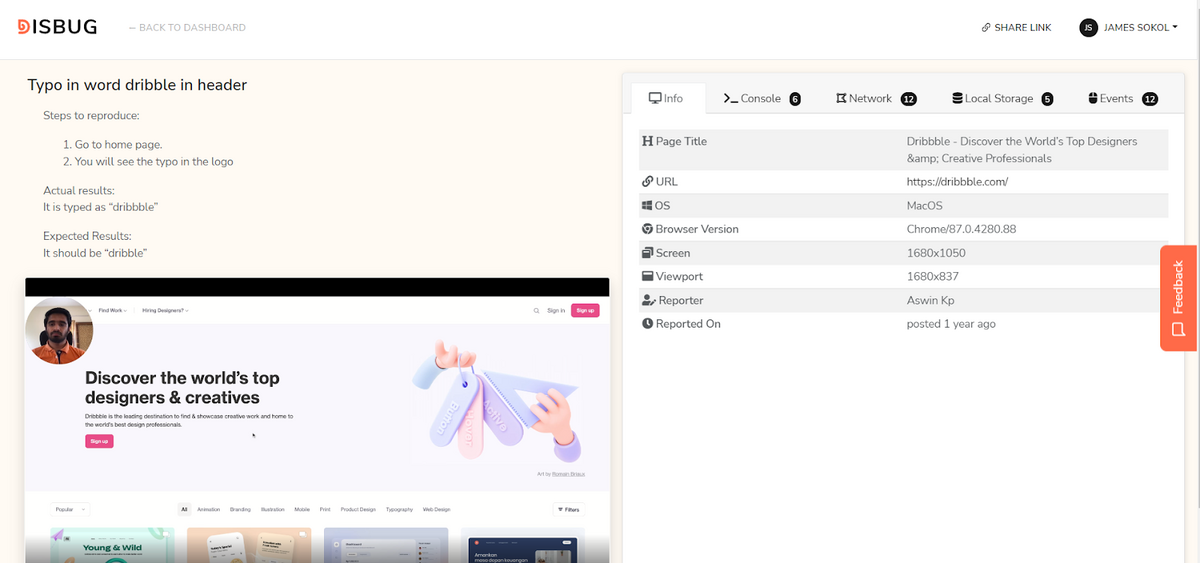
The tool supports many types of logs that you can include in your bug reports (e.g., console logs, network logs, local storage, user clicks, and technical logs).
In addition to this, Disbug also integrates with other popular tools like Jira, Slack, Trello, and Github.
This makes managing bugs easier for your team as you can, for example, quickly open a ticket on Jira or assign a bug report to someone using Github.
Disbug offers a free trial and is otherwise subscription-based, with a 7-day money-back guarantee.
Instabug
If you’re a mobile app developer with a lot of users and a lot of apps, you’ve probably already heard about Instabug.
At first glance, it looks like yet another bug and crash reporting tool for mobile app development.
But what sets Instabug apart from other tools is that it’s not just a tool, but an entire system that allows you to detect, collect and manage bugs in one place, while also providing rich details in reports, like screenshots, device information, and step-by-step instructions for how to replicate the error.
This kind of information can be invaluable for developers trying to figure out what’s causing an issue and how to fix it.
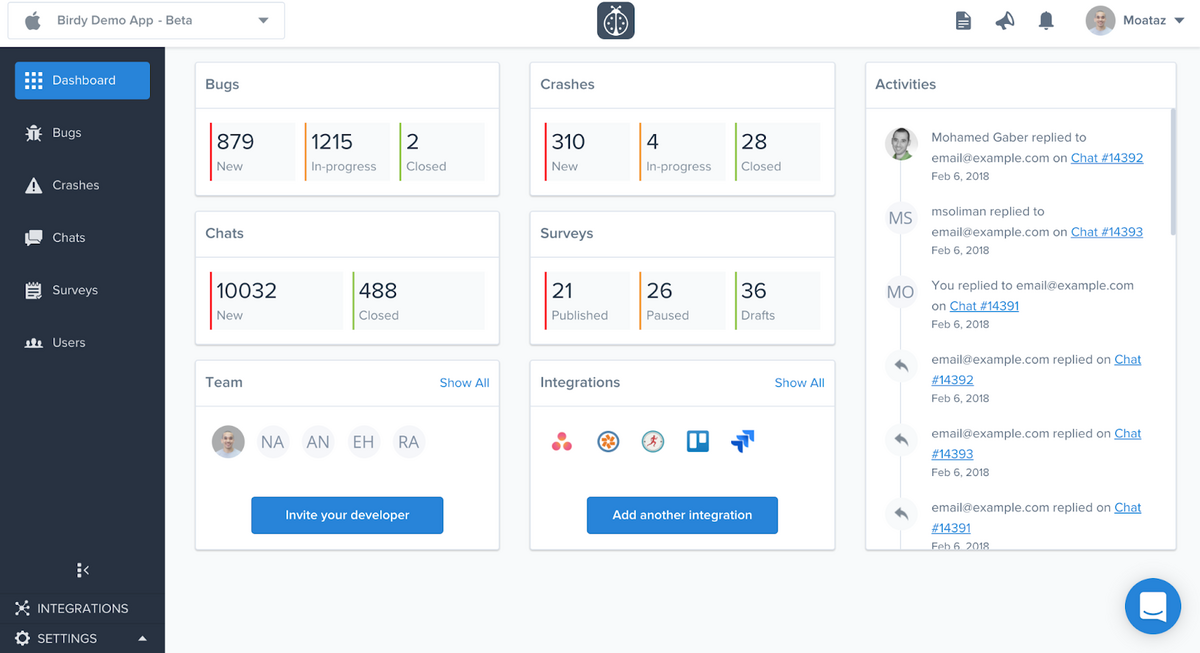
In addition to its core functionality, Instabug also provides features for gathering feedback from users, conducting surveys within apps, and tracking crashes.
The main drawback is that it can be expensive.
Although it has a free plan, you will have to pay a monthly fee for professional use in the development team—as well as additional fees for every extra team member and session added on top of what’s already included in the basic plan.
So if you have a large development team and want to use Instabug for every project, it can get pricey fast.
However, all things considered, it’s one of the best and most efficient options available on the market and is definitely worth looking into.
Mantis Bug Tracker
Mantis Bug Tracker is an open-source, web-based bug tracking system, which is not only available for free, but also has many attractive features.
It’s easy to use, available on multiple platforms and devices, and has an intuitive interface that makes it ideal for beginners or non-technical users who need to manage their bug reports.
The first thing users notice when they log into Mantis is how simple and straightforward it is.
The dashboard gives users a quick snapshot of what’s going on in their system with regard to bug reports and general activity.
Users can also filter views based on specific criteria, such as what type of report was submitted or what status it’s been given by one of the administrators.
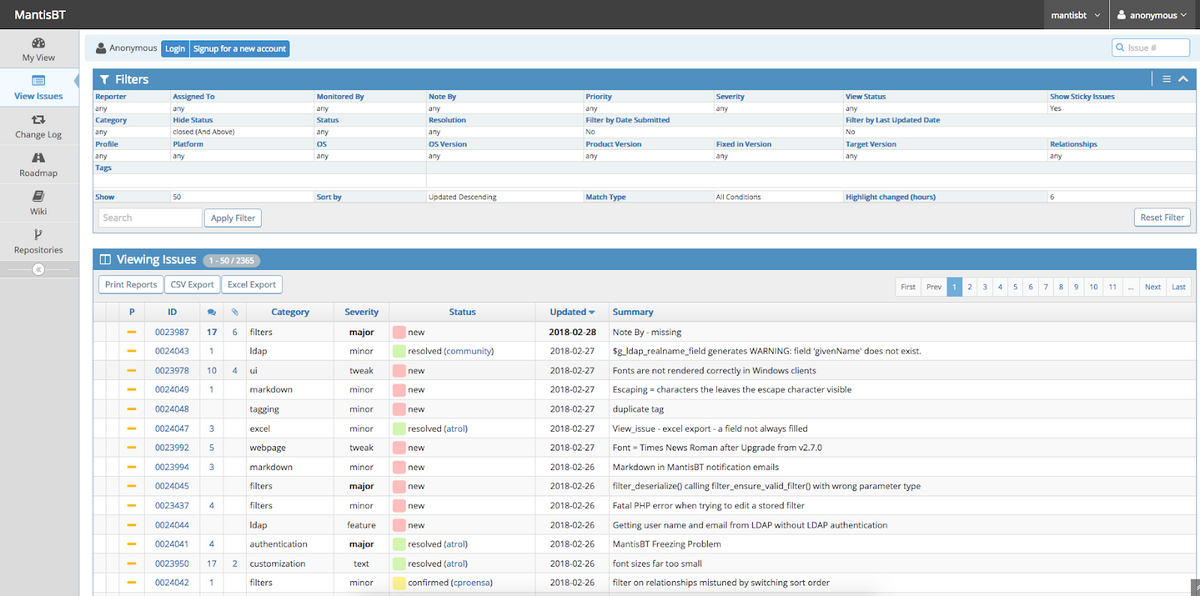
In addition to being user-friendly, this software is also feature-rich, boasting an open-source community, multiple language options and the ability to create custom fields for every single bug you create.
The high level of customization and open architecture with the plugin system allows you to modify the tool according to your needs.
MantisBT is a tool that has been continually updated and improved since it was first released in 2002.
This means that it’s stable, secure and reliable, and best of all, it’s a tool that you can count on in the long run.
Zoho BugTracker
Prioritization is important when it comes to bugs in your software, especially when you’re working on multiple projects at once.
Zoho BugTracker has a visual system that allows you to prioritize bugs based on their importance and severity.
The platform also allows you to create projects, track milestones and issues, as well as generate documentation—and it can even send reminders when certain deadlines are looming.
This will help ensure that developers don’t let important bugs slip through the cracks.
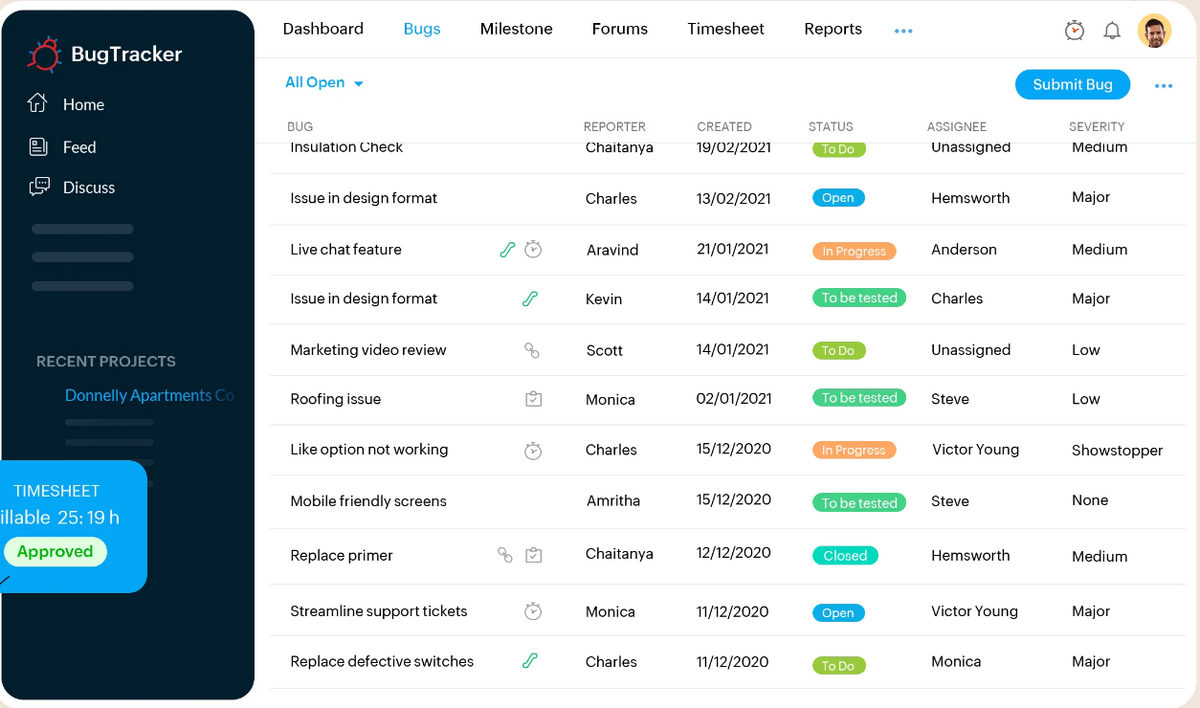
Also, if a bug is reproducible, you can make it easier for developers to fix it by providing steps on how to recreate it.
The tool also has an API, which means that you can integrate it with the rest of your software development process.
If you’re working with multiple teams on different projects, this integration will allow them to use Zoho BugTracker as part of their workflow.
The free version has limited features, but the paid version unlocks additional functionality at a reasonable price if you’re managing a small team.
As it charges by the seat, though, for bigger teams, you’ll probably need to go with one of the other options on this list.
Conclusion
In this article, we’ve compiled our top picks for the best bug-tracking software.
Some of these tools focus on the developers, allowing them to track bugs and issues within their code base.
Others are designed not only for developers, but also for project managers who need to keep tabs on what’s happening across all aspects of a software development process.
We’ve also included some free alternatives that might be right for your team.
Hopefully, this list will give you some ideas on what types of bug-tracking software are available and help you find a solution that works best for your team’s needs.



